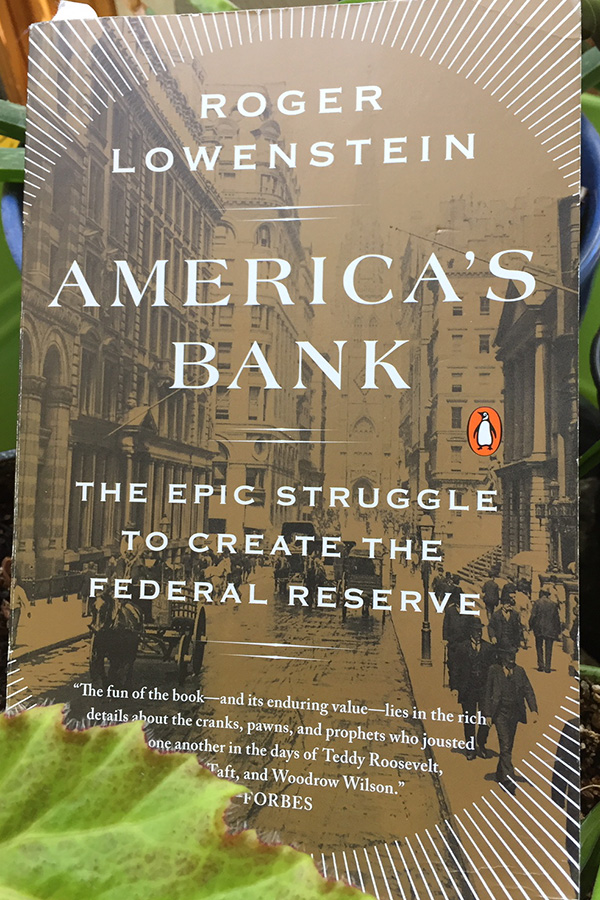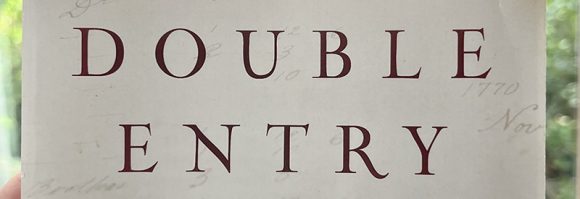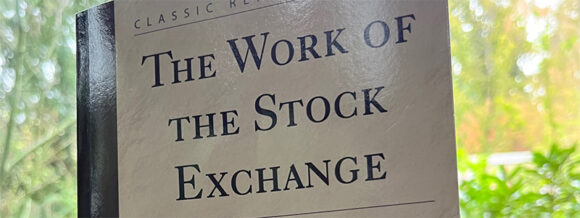
Back to uncovering the history of the modern economy and understanding of how money truly works (see Lords of Finance, War and Gold, Capital in the 21st Century, Debt: The First 5,000 Years, and The Wealth of Nations to get up speed) my latest read is America’s Bank: The Epic Struggle to Create the Federal Reserve.
The title sounds a bit dry and the book delivers on that promise, but there are 320 million Americans today who rely on the Federal Reserve Bank on a daily basis to keep the world’s largest economy humming along, and as we’ve seen in 2008/2009, to be a backstop of the world’s financial system.
We take that totally for granted, assuming that it is as old as this country. It’s not. It came to be only in 1913, barely over 100 years ago. It came to be only because of a series of Panics, the worst of which the Panic of 1907, which in this book and elsewhere seemed to be quite similar to the Panic of 2008.
“History doesn’t repeat itself, but it often rhymes” comes to mind when I find these parallels. When they are separated by a hundred or more years, it seems that not enough people read history.
In any case, prior to 1913 the U.S. had no central bank. No lender of last resort. Panics, bank runs, and recessions were far more common than after 1913. But it was a struggle to create a central bank due to the core beliefs of individualism and anti-federalism from the Declaration of Independence through the turn of the 20th Century. Congress didn’t want to regulate the banks and the banks didn’t want any government interference.
1908 shook up those beliefs as the Panic only subsided when J.P. Morgan invited his fellow N.Y. bankers to his Wall Street office, locked the door, and said they’d get to leave when they collective promised the $20 million needed to end the panic ($500 million in 2019 dollars, only counting inflation, hundreds of billions if you count the growth of the economy).
Read enough history and you’ll see common patterns for how historic events take place. A few key people who had the right idea at the right time and just enough power to turn it into reality. Step one was one key person, J.P. Morgan. Step two was the next key person, the most powerful Senator, Nelson Aldrich, prodded along by an immigrant investment banker, Paul Warburg. Then put populist, progressive, anti-federalist William Jennings Bryan in the way, who lost the Presidential election to Woodrow Wilson in 1912, who thought what the country needed most was lower tariffs, an amendment to replace tariff proceeds with an income tax, and a fix to make U.S. banking stable.
Read enough history and you’ll see that these ideas that we take for granted were then all compromises that survived the meat grinder of ideas that we call democracy. The idea of a central bank (or in the case of the Fed a collection of regional banks that together form a centralized bank for banks) was not embraced by Congress. That’s why it took four years from Panic to Federal Reserve Act. And a lot of bullying by Wilson just to get his own party to vote in favor, plus yet-more compromising to get the other party in favor too, and the banks too, as this would have all fell apart if they had fought back harder.
All this so that we can carry paper money in our pockets that we can trust will be accepted in all States, that we can deposit and withdraw at banks from sea to shining sea, and that which we collectively don’t run out of every 3-5 years as we used to do in the 19th Century.
If nothing else, the lesson from this and all the other books on the history of money is a lesson that the $1 paper bill in your pocket is just a tiny sliver of what money really means.














